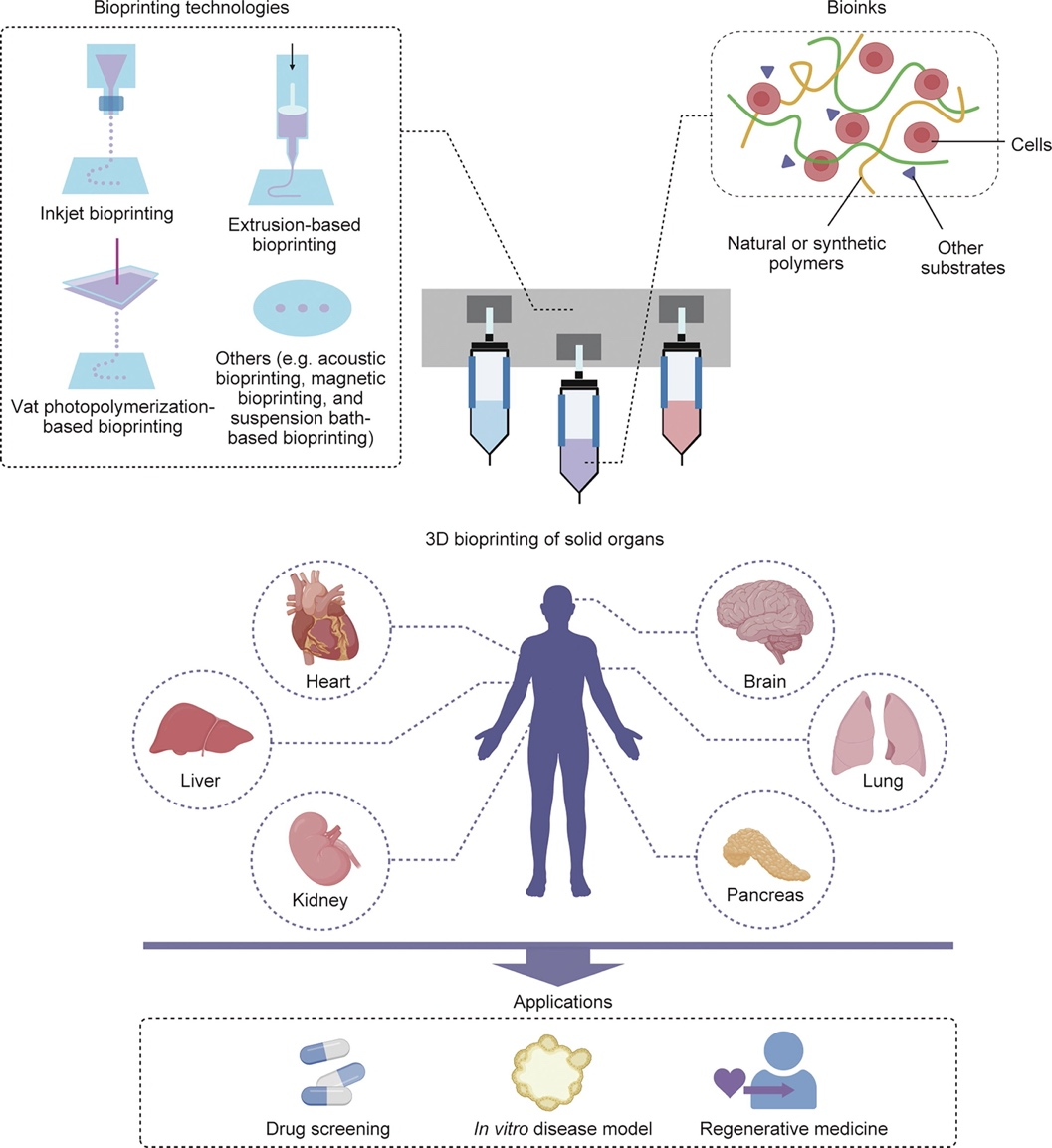
Recently, the team led by Associate Researcher Yu Yin from the Institute of Synthetic Biology of the SIAT, published an invited review article titled "Progress in Organ Bioprinting for Regenerative Medicine" in the internationally renowned academic journal Engineering, the publication of the Chinese Academy of Engineering. The article thoroughly discusses the latest advancements in organ bioprinting within the field of regenerative medicine and offers new perspectives and thoughts on the future development and challenges faced in this domain.

https://doi.org/10.1016/j.eng.2024.04.023
Organ damage or failure often occurs due to injury, disease, and aging, with the human body having limited regenerative capacity in most tissues or organs. Organ transplantation is a crucial medical intervention for organ failure or severe tissue damage but faces significant challenges such as donor shortages and the risk of immune rejection. Therefore, innovative solutions are becoming essential. In this context, on-demand 3D bioprinting of organs has shown great potential in the fields of tissue engineering and regenerative medicine.

Figure 1: Diagram of 3D-printed solid organs
Organ bioprinting is an innovative method that utilizes 3D printing technology to manufacture biological tissues and organs. It involves printing with live cells as the "ink," precisely assembling these cells into functional three-dimensional structures. This technology holds great promise for effectively addressing the shortage of donors in organ transplantation while avoiding immune rejection and long waiting times.
The article provides a detailed overview of the multifaceted progress in organ bioprinting technology, including but not limited to the development of biomaterials, enhancement of printing precision, and successful construction of functional tissues. The research team notes that bioprinting has shown good prospects in manufacturing small tissues such as skin, cartilage, and blood vessels. These successful cases offer valuable experience and data support for future complex organ printing.
Despite significant advancements, organ bioprinting technology still faces many challenges in application. First, the selection and optimization of biomaterials, finding materials that are both biocompatible and can withstand the printing process, remain a current difficulty. Second, further improvement in printing precision is crucial, especially in constructing complex microstructures and vascular networks. Additionally, ensuring that printed tissues and organs can function normally in the body requires extensive experimentation and testing. The article then discusses the latest progress in solid organ bioprinting, such as hearts, livers, kidneys, and pancreases, emphasizing the importance of vascularization and cell integration. Finally, it delves into the main challenges faced by organ bioprinting in clinical translation and large-scale production, proposing future research directions.
The article further emphasizes the key role of interdisciplinary collaboration in this field. Organ bioprinting is not just an engineering breakthrough but also involves close cooperation among multiple disciplines such as materials science, biology, and medicine. The research team calls for more research institutions and companies to join this effort, collectively pushing the technology towards clinical application.
Looking ahead, organ bioprinting is set to demonstrate broad application prospects in regenerative medicine, personalized treatment, and drug screening. For instance, engineered bioprinted organs can accurately simulate the anatomical structure of real organs while also being functional, providing an important platform for various studies. The article proposes new insights on how to further enhance material performance and how to facilitate the widespread application of these engineered organs in practical use. These insights will help address current major medical challenges such as organ shortages and transplant rejection, propelling the development of the regenerative medicine field.

Figure 2. Clinical Translation Pathway and Ethical Considerations for Bioprinted Tissues and Organs
Associate Researcher Yu Yin and Associate Researcher Chen Fei from the Institute of Synthetic Biology of the SIAT, along with Professor Ibrahim T. Ozbolat from Pennsylvania State University, are the co-corresponding authors of this paper. Research Assistant Wang Xiang and Zhang Di are the co-first authors. Technicians Lai Jiaqi and Deng Guotao, as well as Yogendra Pratap Singh and Miji Yeo from Pennsylvania State University, also made significant contributions to the writing of this paper. The study was supported by projects including the National Natural Science Foundation of China General Program, Shenzhen Key Project of Science and Technology, and the Shenzhen Key Laboratory for Synthetic Biology Materials.